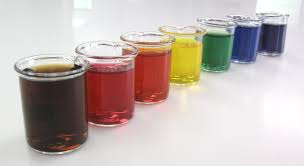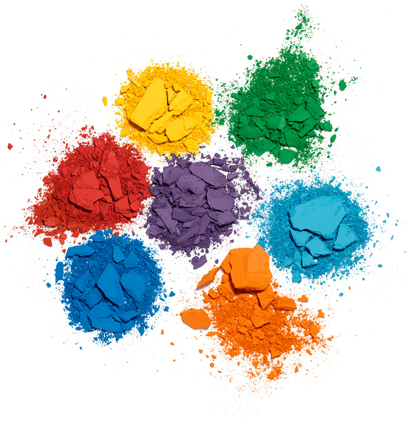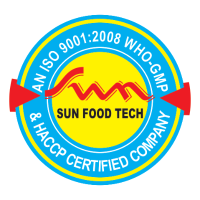Future Trends in Natural Food Colors
Natural Food Colors is any dye obtained from any vegetable, animal or mineral, that is capable of coloring food. These are exempted from certification. These natural colors come from variety of sources such as seeds, fruits and vegetables, leaves, algae & insects. According to the application, a suitable Natural Color can be achieved by keeping in mind the factors such as pH, heat, light, storage and the other ingredients.
Certain naturally occurring food colors are associated with particular phyto-nutrients. These bio-chemicals fight disease in plants and continue to do the same when these colored plants are ingested by human beings. Natural food colors are available in different forms, as powders, pastes and liquids.
Categories of Natural Food Colors:
Plants:
Plant based colors come from various parts of the plant. The leaves, roots, flowers, fruit all provide coloring agents. Examples are: - Turmeric, Chlorophyll, anthocyanin, carotenoids and so on.
Animals:
An extremely well known animal based color is cochineal or carmine. Derived from the body fluid of an insect, it has been widely used over the years.
Mineral:
Mineral colors in food include Titanium dioxide which imparts an opaque appearance to the food.
The following Natural Food Colors are used in different food items.
Annatto Extract
Annatto has been used since the ancient times. The color represented fire, sun and blood in early American Indian civilizations. The color was used for food, dying clothes, and coloring the body during ceremonies. It is said to have medicinal properties.
Source:
Annatto is obtained from the seeds of the bush Bixa Orellana. It is yellow natural food colorant. The pigments that produce this yellow to orange color range are the carotenoids, bixin and norbixin. The concentration of the color is expressed as a percentage of these compounds and the content varies with the extraction method. Oil soluble annattos have a brighter hue.
Processing:
Fruits are dried and seeds extracted from them are crushed. The seeds have a coating of an oily paste that contains bixin. Bixin is yellow orange carotenoids. It is extracted using aqueous alkaline solution and vegetable oil solvent. Vegetable oil solvent gives oil soluble bixin and alkaline solution gives water soluble norbixin while Propylene Glycol yields a combination of both bixin and norbixin.
Properties:
It fades in strong or direct light. It is stable in alkaline mediums. It degrades in acids and by oxidation. It is available as oil-soluble extracts, oil suspensions or water-soluble extracts.
Applications:
It is used in dairy products, cheese, ice cream, sugar confectionery, beverages and in bakery products.
Certain naturally occurring food colors are associated with particular phyto-nutrients. These bio-chemicals fight disease in plants and continue to do the same when these colored plants are ingested by human beings. Natural food colors are available in different forms, as powders, pastes and liquids.
Categories of Natural Food Colors:
Plants:
Plant based colors come from various parts of the plant. The leaves, roots, flowers, fruit all provide coloring agents. Examples are: - Turmeric, Chlorophyll, anthocyanin, carotenoids and so on.
Animals:
An extremely well known animal based color is cochineal or carmine. Derived from the body fluid of an insect, it has been widely used over the years.
Mineral:
Mineral colors in food include Titanium dioxide which imparts an opaque appearance to the food.
The following Natural Food Colors are used in different food items.
Annatto Extract
Annatto has been used since the ancient times. The color represented fire, sun and blood in early American Indian civilizations. The color was used for food, dying clothes, and coloring the body during ceremonies. It is said to have medicinal properties.
Source:
Annatto is obtained from the seeds of the bush Bixa Orellana. It is yellow natural food colorant. The pigments that produce this yellow to orange color range are the carotenoids, bixin and norbixin. The concentration of the color is expressed as a percentage of these compounds and the content varies with the extraction method. Oil soluble annattos have a brighter hue.
Processing:
Fruits are dried and seeds extracted from them are crushed. The seeds have a coating of an oily paste that contains bixin. Bixin is yellow orange carotenoids. It is extracted using aqueous alkaline solution and vegetable oil solvent. Vegetable oil solvent gives oil soluble bixin and alkaline solution gives water soluble norbixin while Propylene Glycol yields a combination of both bixin and norbixin.
Properties:
It fades in strong or direct light. It is stable in alkaline mediums. It degrades in acids and by oxidation. It is available as oil-soluble extracts, oil suspensions or water-soluble extracts.
Applications:
It is used in dairy products, cheese, ice cream, sugar confectionery, beverages and in bakery products.





Comments